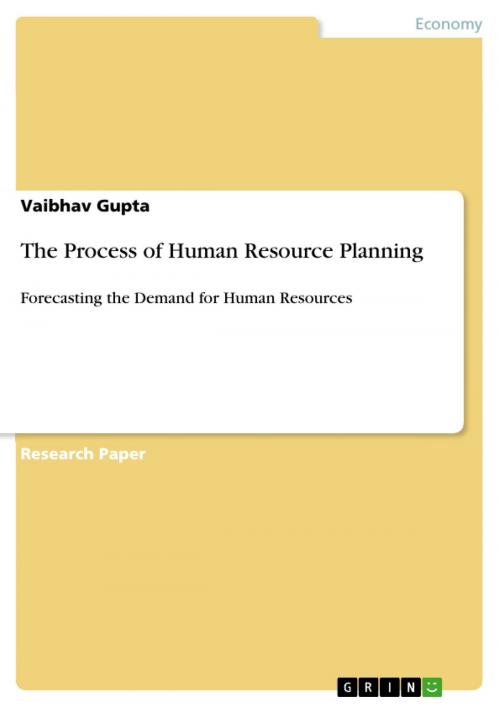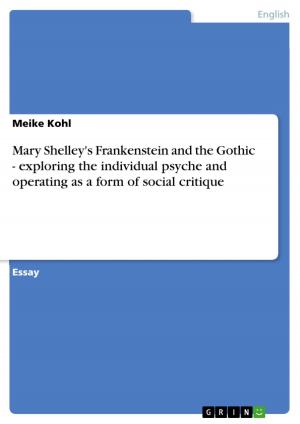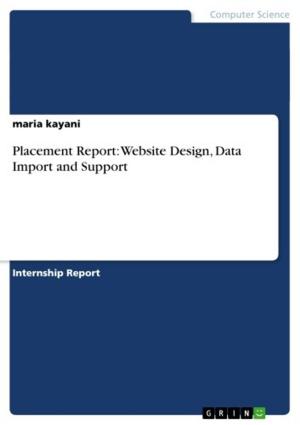The Process of Human Resource Planning
Forecasting the Demand for Human Resources
Business & Finance, Human Resources & Personnel Management| Author: | Vaibhav Gupta | ISBN: | 9783640548057 |
| Publisher: | GRIN Publishing | Publication: | February 25, 2010 |
| Imprint: | GRIN Publishing | Language: | English |
| Author: | Vaibhav Gupta |
| ISBN: | 9783640548057 |
| Publisher: | GRIN Publishing |
| Publication: | February 25, 2010 |
| Imprint: | GRIN Publishing |
| Language: | English |
Research Paper (postgraduate) from the year 2010 in the subject Business economics - Personnel and Organisation, , language: English, abstract: Forecasting a company's future demand in human resources is a necessary procedure in light of organizational objectives and strategies. Forecasting is based on information from the past and the present to identify expected future conditions. Such information may come from external environmental scanning and/or the assessment of internal strengths and weaknesses. There are different methods for forecasting human resources demand that range from a manager's best guess to a complex computer simulation. While simple assumptions may be sufficient in small-sized companies, complex models that combine subjective judgment and quantitative data are usually necessary for larger organizations. The future demand for employees is calculated on an organization-wide basis; the needs of individual units in the organization are taken into consideration. The HR expert or an experienced manager who handles the forecasting process needs to consider specific openings that are likely to occur and to use such data as the basis for planning. Openings are created when employees leave a position because of promotions, transfers, and terminations. Forecasting leads to projections for the future. Depending on the forecasting method used, the projections may be more or less subject to error. Once human resources needs have been identified, the availability must be checked. The forecast of the availability of human resources is considering both internal and external supplies. Internally, succession plans developed to identify potential personnel changes, due to promotion, retirement, resignation, etc for each department in an organization are examined. By the end of this analysis, the organization is able to know if there are employees to cover future demand from within its resources. Externally, there are many factors, such as the labour-force population estimates, trends in the industry and technological developments. The organization must and they do take such factors into consideration to be able to know if ideal candidates can be located.
Research Paper (postgraduate) from the year 2010 in the subject Business economics - Personnel and Organisation, , language: English, abstract: Forecasting a company's future demand in human resources is a necessary procedure in light of organizational objectives and strategies. Forecasting is based on information from the past and the present to identify expected future conditions. Such information may come from external environmental scanning and/or the assessment of internal strengths and weaknesses. There are different methods for forecasting human resources demand that range from a manager's best guess to a complex computer simulation. While simple assumptions may be sufficient in small-sized companies, complex models that combine subjective judgment and quantitative data are usually necessary for larger organizations. The future demand for employees is calculated on an organization-wide basis; the needs of individual units in the organization are taken into consideration. The HR expert or an experienced manager who handles the forecasting process needs to consider specific openings that are likely to occur and to use such data as the basis for planning. Openings are created when employees leave a position because of promotions, transfers, and terminations. Forecasting leads to projections for the future. Depending on the forecasting method used, the projections may be more or less subject to error. Once human resources needs have been identified, the availability must be checked. The forecast of the availability of human resources is considering both internal and external supplies. Internally, succession plans developed to identify potential personnel changes, due to promotion, retirement, resignation, etc for each department in an organization are examined. By the end of this analysis, the organization is able to know if there are employees to cover future demand from within its resources. Externally, there are many factors, such as the labour-force population estimates, trends in the industry and technological developments. The organization must and they do take such factors into consideration to be able to know if ideal candidates can be located.















